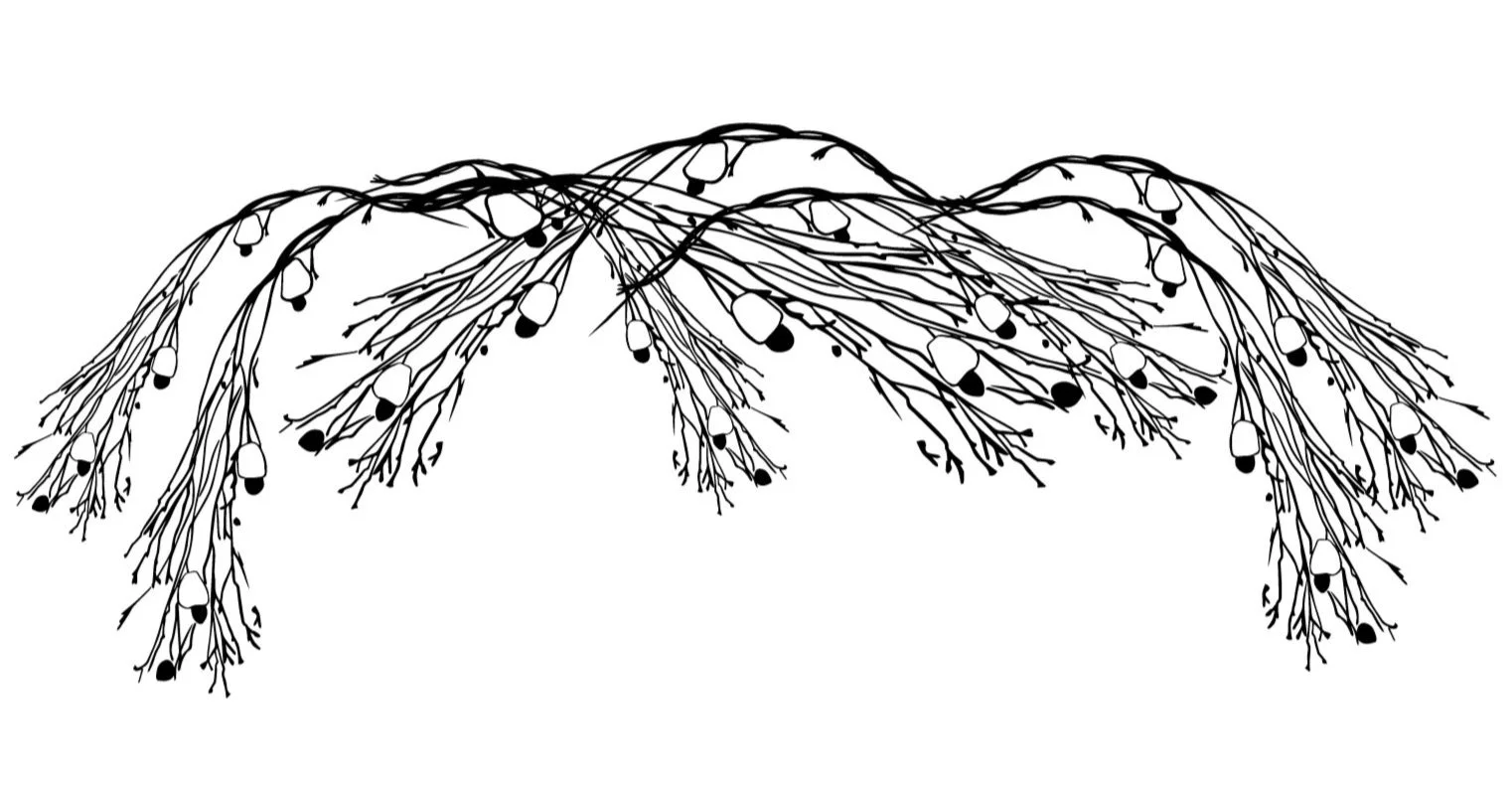The Lintalumala Project
In palawa kani, the language of the Tasmanian Aboriginal people, lintalumala is the name given to the Native Cherry tree, a woody plant which once grew in abundance on this site.
In 1873, The Mercury recounted that Fr. Connolly, the first Catholic Priest in Tasmania, would join Aboriginal peoples in celebration among these trees on land that is now part of Guilford Young College:
In Father Connolly's time, all that square of the city on which the nunnery stands now, and whereon, too, the cathedral points with broken pinnacles to the sky, was granted as a glebe to the Roman Catholic faith, and all along its top boundary there stood, until lately, deep green cherry trees of our native kind, under which the aborigines [sic] used to shade themselves, and pick off the fruit, whilst the good old priest sat by, and joined in the chat, and sometimes the corroboree [sic], when the moon rose and the fires were lit.
– Something to Sigh About 1873
A Lintalumala branch
In just a few short years, however, the Muwinina people who once shared their food with Fr Connolly were gone and the lintalumala trees were “ringed” and “lopped”.
Inspired by these entwined narratives of cross-cultural sharing and loss, the lintalumala project hopes to inspire students, staff, and visitors to the school to reflect upon the diverse stories and enduring connections between the past and present that continue to shape our community.

